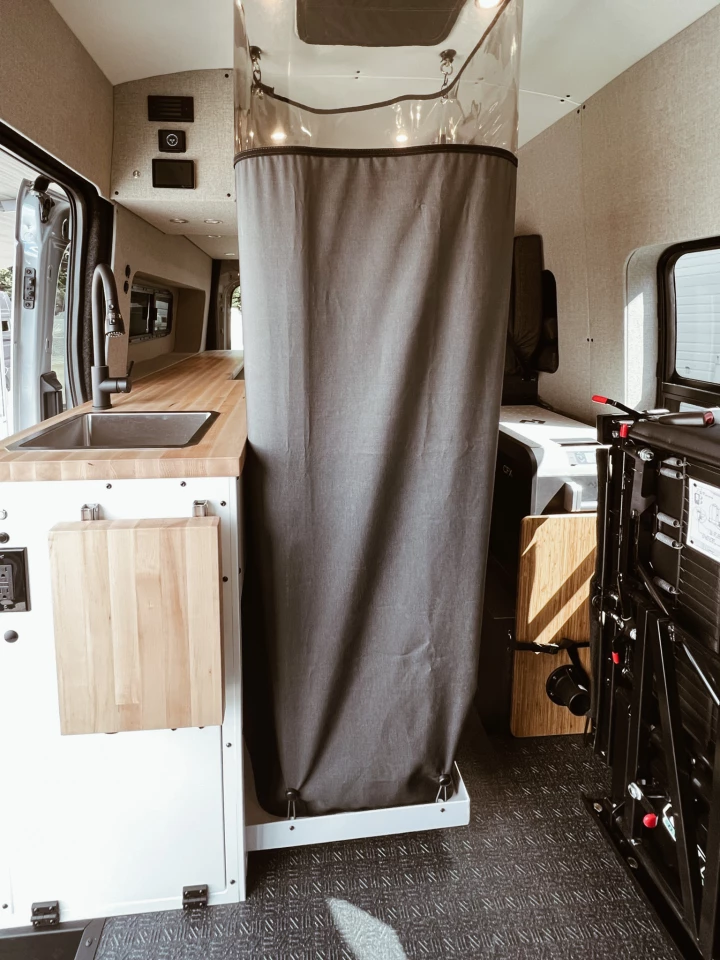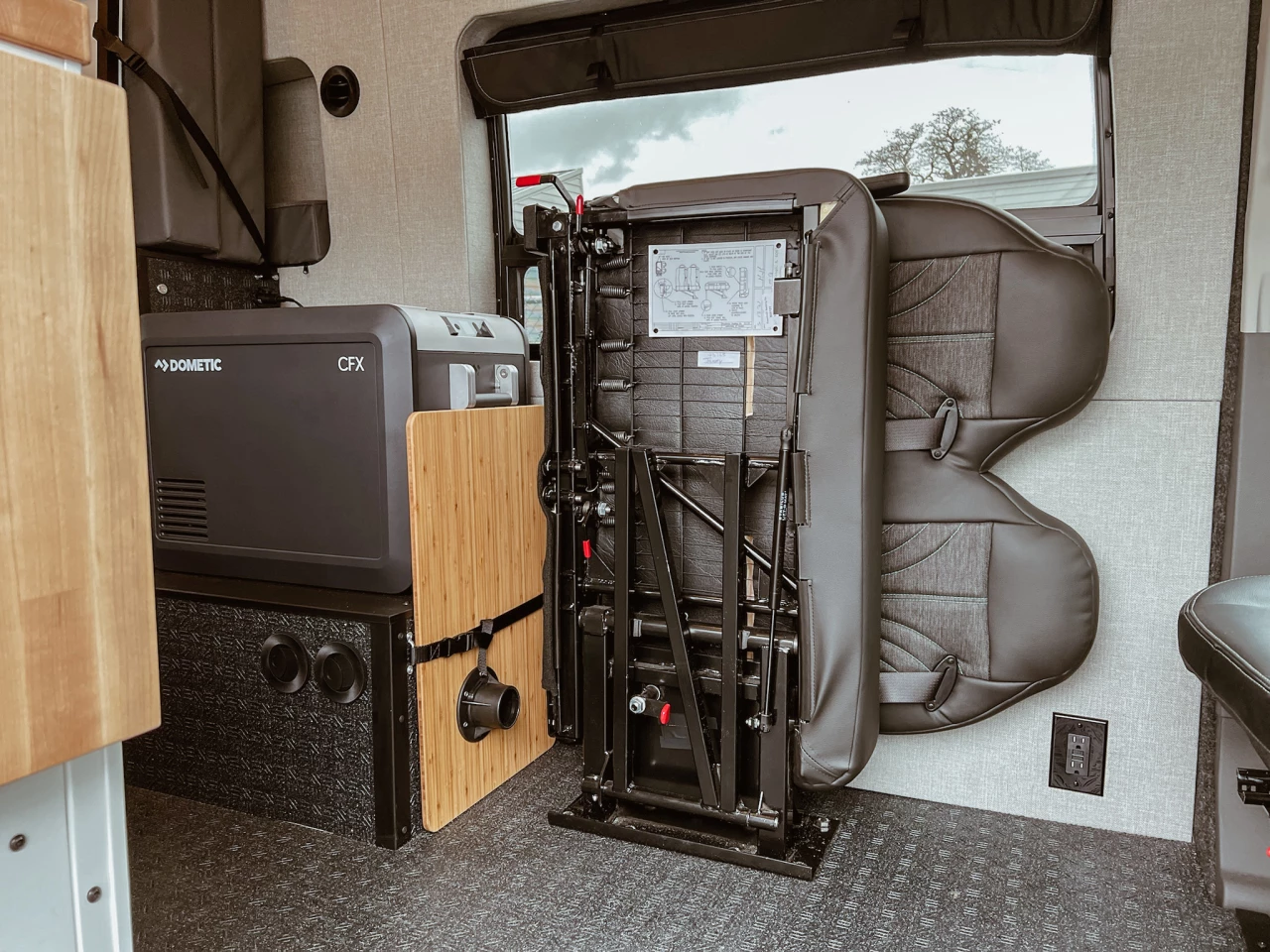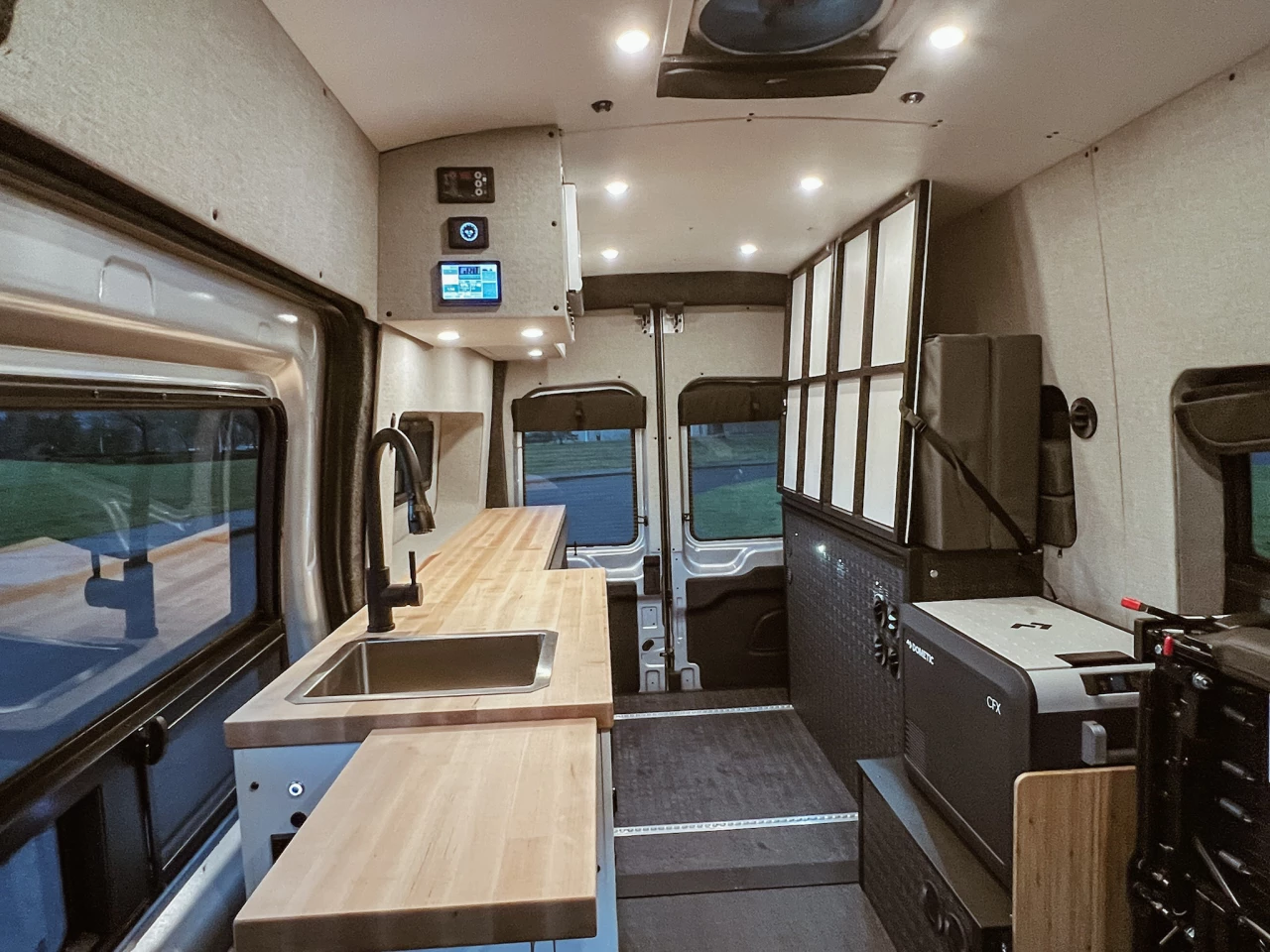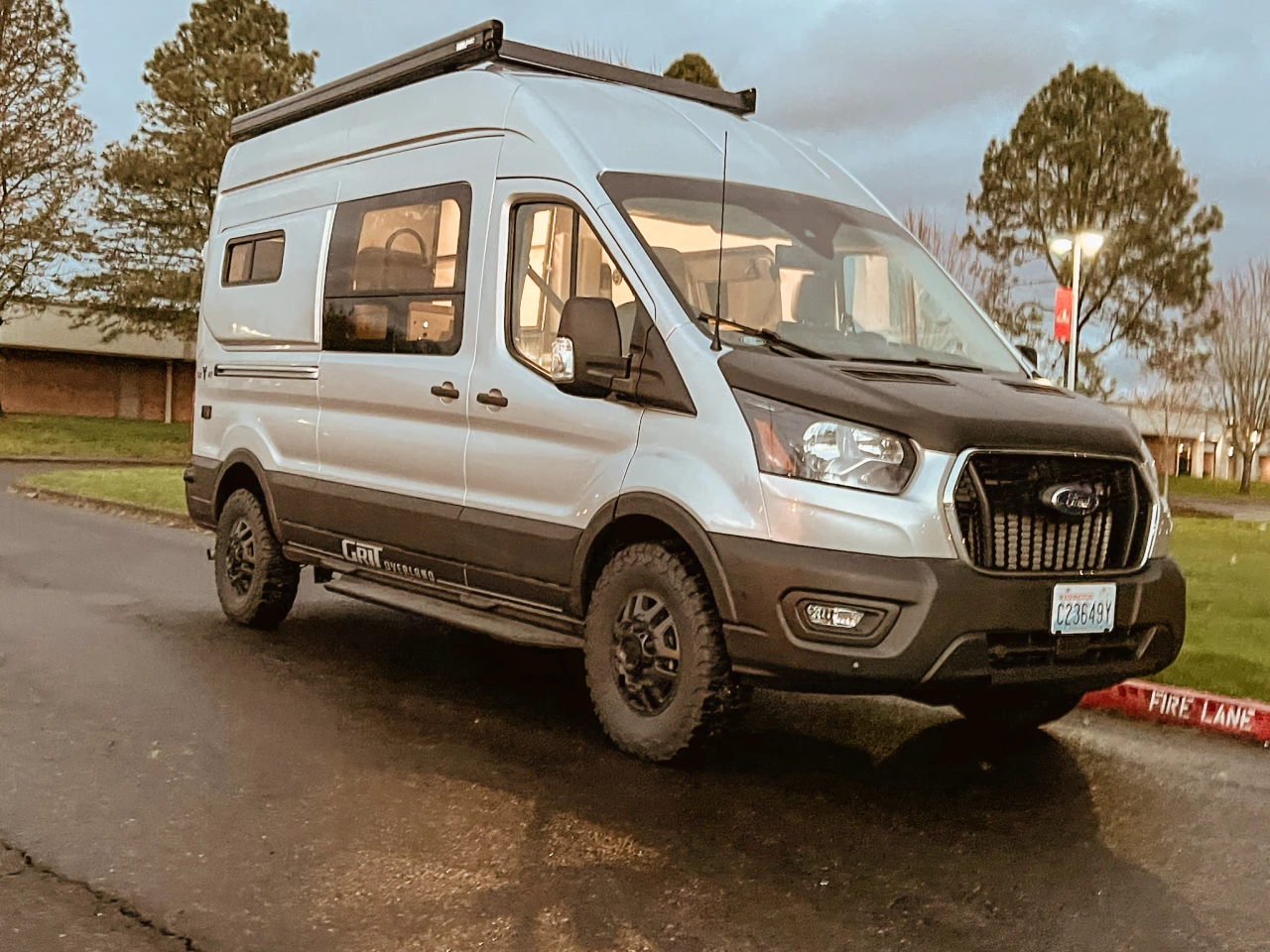"The only time you need a bed, extra seating, shower or toilet is when someone is using them. Otherwise, they’re just taking up precious space." That's the thinking Vancouver, Washington's Grit Overland uses in raising the bar on floor plan flexibility in its ultra-versatile all-terrain camper vans. The company uses virtually every trick we've seen (and some we haven't) to get the most out of every square millimeter of its Ford Transit vans. Pack in a powerful lithium battery bank and water-purifying system, and you have an off-grid van capable of transporting, sleeping, feeding, powering and cleaning a family of four and all their favorite adventure toys.
For its "GO" Ford Transit 148 camper van lineup, Grit starts with the tried-and-true floor plan so common in European camper vans and small motorhomes: folding bed in the back, central bathroom, kitchen inside the passenger-side sliding door and front dinette. However, instead of building each of those as a permanent space, it's deconstructed them into temporary fixtures that fold, slide or flip away when not in use, keeping the camper spacious and open from the cab seats to the rear doors.
The folding bed is a common, age-old solution, freeing up space for bicycles, surfboards or other gear and cargo during the day, whether parked at camp or on the road. Grit has put a slight spin on the concept by using a narrow counter atop the over-wheel-well storage console as a passenger-side support. The counter runs clean back from the kitchen block and could be useful for having the whole van crew pitch in with dinner or as a garage workbench for adjusting ski bindings or working on bike components. Grit has also integrated a transverse table that folds down from the driver's side to work as another bench, dining table or desk with a view.

At night, the bed platform folds down to support the tri-fold mattress, creating a 60 x 79-in (152 x 201-cm) transverse queen bed. That bed pairs with a pop-up "penthouse" sleeper roof to sleep four people. On the non-pop-up GO Terra model, an optional front-seat bed adds a single berth for a total of three.
Moving forward, one notices the space between the bed and front dining bench that's often occupied by a full-time bathroom is left largely open, housing only a Dometic box fridge atop one of Grit's low consoles. Grit mentioned both a toilet and a shower in its original space-saving strategy, however, so they must be hiding somewhere.

Grit could have opted for a simple outdoor shower, which it does in fact include on the van, but it has also installed an indoor bathroom in the most unlikely of places: the kitchen block. The shower pan extends out from inside the main under-counter cabinet, and the shower curtain hooks into rings on the ceiling, creating a private shower room smack in the middle of the floor. The available portable toilet also stows below the counter and can be used behind the shower curtain for privacy.
Helping make the deployable shower room possible, the two-seat passenger/dining bench features a fold-away design that sees it store neatly up against the driver's sidewall when not in use. We particularly like this idea for parents, grandparents or couples who split time traveling as a twosome or with extra passengers. They enjoy more space when it's just the two of them but can still readily transport and camp two kids or friends. The bench works with the removable dining table that stows away behind it and the swivel cab seats to create a four-person dinette.

Circling back to the kitchen, it isn't all bathroom duties. Grit Overland has kept that long countertop clear and flush by using a portable induction cooktop rather than an inset stove. An overhead microwave, deep sink and the aforementioned fridge provide both cooking essentials and conveniences.
The beating heart of the Grit van is what the company has coined the "GO Farther Power System," built atop the foundation of a high-capacity 10,250-Wh lithium battery bank. That battery comes wired up to an automatic starter that kicks the van engine on for high-output alternator charging when battery level drops to critical. Grit says the rapid-charge system takes just an hour to charge up the battery. The electrical package also includes a Victron touchscreen, 3,000-W inverter and 30-A shore power hookup.

Grit continues the push toward full autonomy with the "Stay Longer" plumbing setup. Along with 76-L fresh and waste water tanks, the setup includes a two-stage filtration system with both carbon filter and UV-C LED. It's not quite as cool as an airborne water-harvester, but Grit's system does allow campers to dunk a hose into a pond or river, pump out natural water and seamlessly filter it for drinking and cooking, without the extra steps of manual filtering or boiling. The water heater/furnace combo runs on gasoline from the vehicle, eliminating the need for a separate fuel like propane.
The base Ford Transit high-roof van comes powered by a 310-hp 3.5-liter twin-turbo Ecoboost V6 with all-wheel drive and limited slip differential. It gets reinforced with front and rear skid plates, a 2-in (5-cm) suspension lift, rear suspension upgrade with quick-adjust Falcon shocks, and oversized all-terrain tires, including a fifth mounted on a rear spare carrier. To save weight, boost strength and weather resistance, and eliminate road noise, Grit builds all its cabinetry and fixtures out of aluminum, bolting them directly to the van walls.

Grit Overland previously developed campers as Paradigm Vans but rebranded in conjunction with the new, improved 2022 Transit overland lineup. The GO All Terrain (aka GO/AT ... as in GOAT, as in "greatest of all time") specs out as described and starts at US$169,000. Grit offers the option of deleting certain equipment to work the price down. The entry level GO Terra model loses the pop-up roof, half of the battery capacity, the auto-start charging system, the standard air conditioner and a few other features and starts at $148,000. Grit is also working on a GO Baja flagship based on a Mercedes-Benz Sprinter.
Source: Grit Overland



















